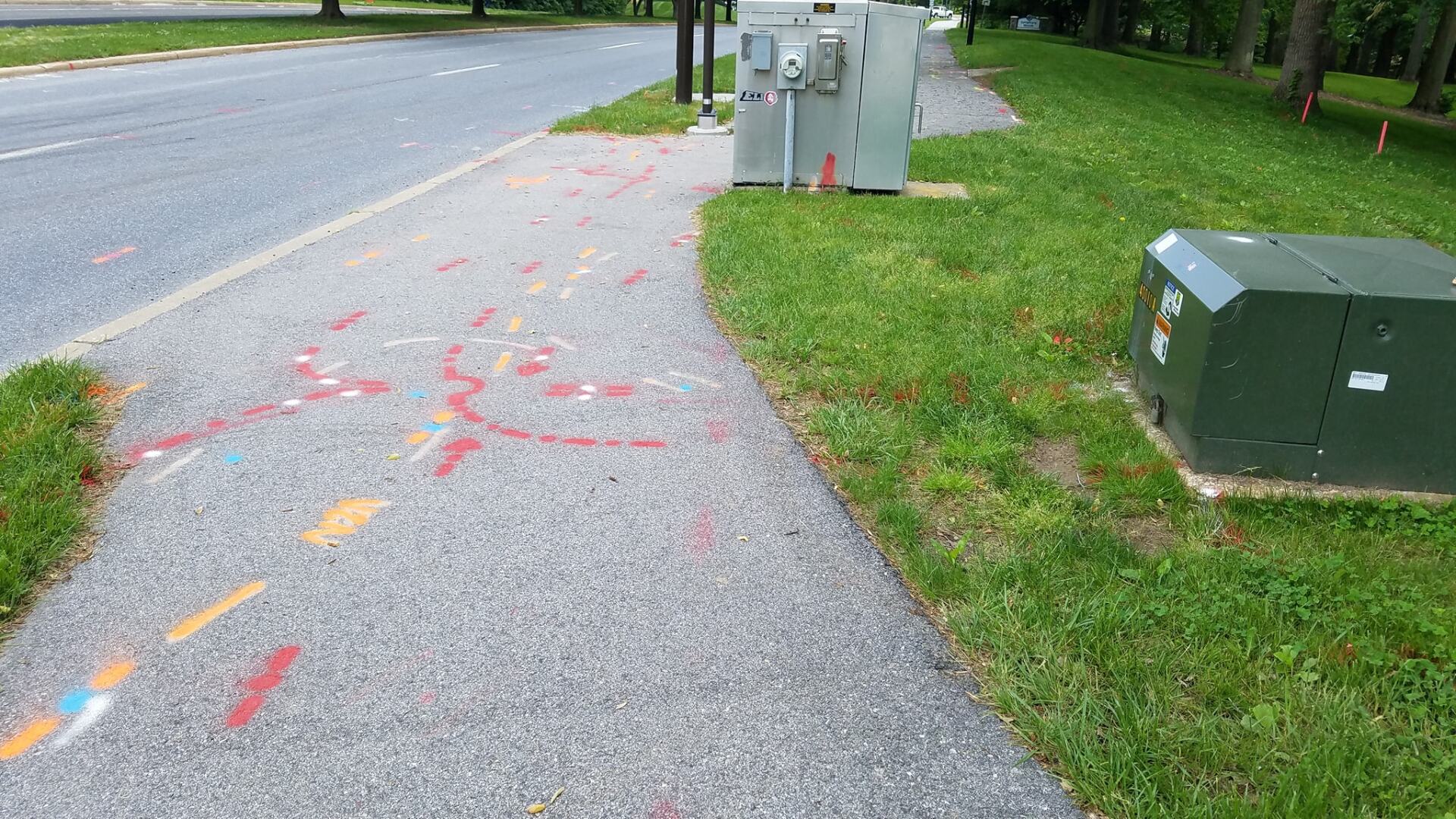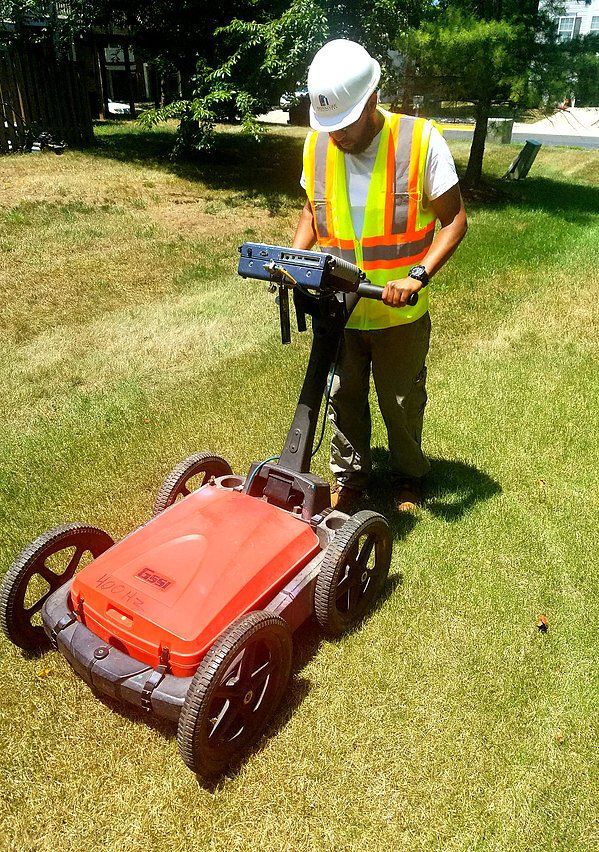GROUND PENETRATING RADAR
How we use GPR to locate utility lines underground
How GPR Helps Elite Utility Find Difficult Utility Lines
One of the staple technologies in private utility locating is ground penetrating radar. Here at Elite Utility Locating, we have several years experience operating these unique pieces of equipment. With our expertise, we can create a clear map of any and all hidden obstacles underground. Let us tell you more about GPR.

What Is GPR? How Does It Work?
While the term "Ground Penetrating Radar" can be imposing on its own, the truth is that they are simpler machines than you might think at first. A Ground Penetrating Radar is quite simply a radar designed to amp the subsurface, that is to say, it's a radar that excels at getting images from underground.
To do this GPRs emit- radio waves usually in the 1 to 1000 MHz range, which then results in echoes from the underground objects which the device can use to map an image of the subsurface based on the delay of the echoes as well as their strength. In short, it works not unlike a sonar or fish-finder, it just works in a different medium.
What's It Commonly Used For?
Obviously, in our world, GPR is used to identify utility lines and other items hidden underground. But it also has plenty of other uses in other industries.
Ground Penetrating Radars are used in a wide variety of fields, but generally speaking, they are used to detect hidden elements. Forensic police use GPRs to locate buried evidence or even bodies, as the alternative of digging any suspicious site would be far too time-consuming to be viable. Similarly, the military relies on these radars to identify underground mines, potential tunnels, and other dangerous elements like unexploded ordnance.
GPR in general provides a simple way to detect underground elements without having to directly interact with the medium and helps avoid pointless excavations.
Is GPR Safe To Use?
A Ground Penetrating Radar is perfectly safe to use as it doesn't emit any dangerous radiations nor toxic byproducts as part of its operations. While these radars tend to be bulky they are considered completely safe for human use, as they only emit radio waves, which most of us are already constantly exposed to.
In fact, despite their size GPRs emit fewer waves than a smartphone. On average the waves sent by an activated Ground Penetrating Radar amount to 1% of the average wave exposure, you get from a cellphone. So GPRs are as harmless to use as they can be.
How Accurate is GPR?
While GPRs are generally some of the most accurate tools available for subsurface imaging it is important to note that they also have limitations and their own quirks. In our case for utility marking, we are able to achieve upwards of 90% accuracy.
The overall accuracy of a Ground Penetrating Radar will vary based on the distance towards the subsurface, the material of the ground, and even the elements present in the area. For example, moisture can affect the readings of the machine since it can bounce waves back towards it. Saltwater results in a similar problem and metal constructions result in shadow areas since radio waves can't properly pass through them.
That said in ideal conditions GPRs are some of the most accurate tools in the market, and the scanning errors usually remain way below the 20% mark.
What Stops GPR From Working Underground?
Generally, the main issues GPRs encounter on the subsurface are high-conductivity materials. Salt is, in fact, one of its main obstacles, and as such any soil that is rich in salt like clay or has been exposed to it will absorb the waves of the device and reduce its efficiency. Saltwater is an issue too, as it shows up as a shadowed area on its imaging, meaning that detecting saltwater is possible, but not what is below that.
Last but not least metal structures tend to stop waves altogether, resulting in shadowed areas right below structures like pipes and beams.
Can GPR Be Used To Find Water?
Yes, GPR technology can detect water underground, and some systems are specifically designed to identify the flow of water. A Ground Penetrating Radar can identify both fresh and saltwater and can easily map any underwater tunnels that might be carrying said water on the subsurface.
How Far Down Can GPR Reach?
The overall reach of a GPR is mostly tied to the surface being explored, and the power of the antenna used in the machine. For most of our utility locating, we expect to reach about 50 feet.
In deal soil like granite which has next to no interference, a GPR could reach depths of up to 100 feet. However, soil materials that absorb waves like clay can reduce the reach of a Ground Penetrating Radar to just 3 feet.
When it comes to the antenna low-frequency antennas can obtain reflections from up to 100 more feet than higher frequency ones, but have much lower resolution due to this. On the other hand, high-frequency antennas deliver clearer images but usually work in shallow depths of 14 feet at most.
As a whole, the effective reach of a GPR is not a fixed number, and the specific value will depend on the GPR model and the conditions of the soil. That's why we average 50 feet.

